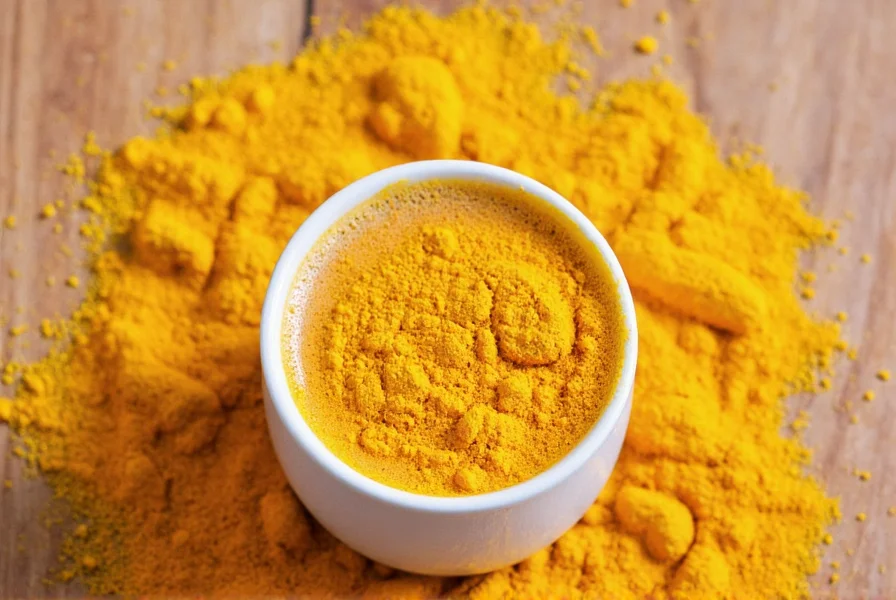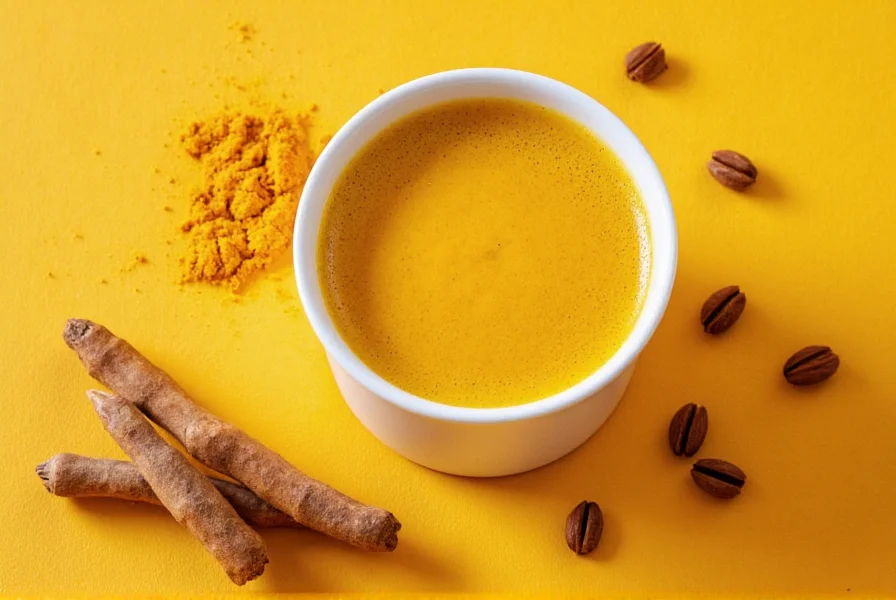Turmeric coffee has surged in popularity as health-conscious consumers look for ways to enhance their daily coffee ritual with functional ingredients. This vibrant golden beverage blends the familiar comfort of coffee with the potential health benefits of turmeric, creating a synergistic drink that supports both mental clarity and physical wellness. Unlike plain coffee, turmeric coffee incorporates curcumin—the active compound in turmeric—known for its potent anti-inflammatory and antioxidant properties.
The Science Behind Turmeric Coffee
Curcumin, turmeric's primary bioactive compound, has been extensively studied for its health-promoting effects. However, curcumin has notoriously low bioavailability when consumed alone. When preparing turmeric coffee, adding black pepper (which contains piperine) increases curcumin absorption by up to 2,000%. Including a healthy fat source like coconut oil or grass-fed butter further enhances absorption, as curcumin is fat-soluble.
Research published in the Journal of Medicinal Food indicates that regular consumption of curcumin may help reduce inflammation markers in the body. While coffee itself contains antioxidants, adding turmeric creates a more comprehensive antioxidant profile that may provide enhanced protection against oxidative stress.
Health Benefits of Turmeric Coffee
Understanding the potential health benefits of turmeric coffee requires examining both components individually and together:
| Benefit | Scientific Basis | Practical Impact |
|---|---|---|
| Anti-inflammatory effects | Curcumin inhibits multiple inflammation pathways | May reduce joint discomfort and muscle soreness |
| Antioxidant protection | Both coffee and turmeric contain potent antioxidants | Supports cellular health and may slow aging processes |
| Cognitive support | Coffee provides alertness; curcumin may support brain-derived neurotrophic factor | Enhanced focus with potential long-term brain health benefits |
| Digestive wellness | Turmeric stimulates bile production; coffee triggers colon activity | May support healthy digestion when consumed appropriately |
It's important to note that while promising, many studies on turmeric's benefits use concentrated curcumin supplements rather than dietary amounts. The effects from regular turmeric coffee consumption are likely more subtle but contribute to an overall wellness-supportive diet.
How to Make the Perfect Turmeric Coffee
Creating an effective turmeric coffee requires attention to ingredient ratios and preparation methods to maximize both flavor and potential benefits. Here's a science-backed approach:
- Brew your coffee using your preferred method (French press, pour-over, or espresso)
- Add 1/4 to 1/2 teaspoon of high-quality turmeric powder per 8oz serving
- Include a pinch of black pepper (about 1/16 teaspoon)
- Mix in 1 teaspoon of healthy fat (coconut oil, MCT oil, or grass-fed butter)
- Blend thoroughly until frothy and emulsified
For those seeking how to make turmeric coffee at home without bitterness, consider adding a small amount of cinnamon or a natural sweetener like raw honey. The optimal turmeric coffee recipe for inflammation maintains the critical black pepper component while using high-quality, organic turmeric with verified curcumin content.

Potential Considerations and Side Effects
While turmeric coffee offers potential benefits, certain individuals should exercise caution. Those taking blood thinners should consult their healthcare provider before regular consumption, as curcumin may enhance blood-thinning effects. People with gallbladder issues might experience discomfort, as turmeric can stimulate bile production.
The best time to drink turmeric coffee is typically in the morning or early afternoon to avoid potential sleep disruption from caffeine. However, those sensitive to caffeine might prefer consuming it earlier in the day. Most research suggests limiting turmeric intake to 500-2,000mg of curcumin daily, which translates to approximately 1-2 teaspoons of turmeric powder in your coffee.
Turmeric Coffee vs. Traditional Coffee: A Practical Comparison
Understanding the differences between turmeric coffee and regular coffee helps determine when each might be appropriate:
- Taste profile: Turmeric adds earthy, slightly bitter notes that complement coffee's natural bitterness
- Digestive impact: Some find turmeric coffee gentler on the stomach than plain coffee
- Energy experience: The combination may provide more sustained energy with less jitteriness
- Timing considerations: Traditional coffee might be preferable later in the day for those sensitive to turmeric's potential digestive effects
For those wondering does turmeric coffee help with joint pain, the answer depends on individual circumstances. While some people report reduced discomfort with regular consumption, scientific evidence for significant pain relief from dietary turmeric alone remains limited. It's best viewed as part of a comprehensive approach to wellness rather than a standalone treatment.

Creating Your Personalized Turmeric Coffee Experience
The beauty of turmeric coffee lies in its adaptability to individual preferences and needs. Those seeking turmeric coffee vs regular coffee benefits for morning inflammation might increase the turmeric slightly, while those focused on cognitive benefits might maintain standard ratios but ensure proper fat inclusion for absorption.
For a creamier golden milk coffee recipe variation, substitute your regular milk with coconut milk or almond milk, which complements both coffee and turmeric flavors while adding additional healthy fats. This version works particularly well as an afternoon pick-me-up when you want the benefits of turmeric without the stronger coffee flavor.
Remember that consistency matters more than perfection when incorporating functional foods like turmeric into your routine. Regular, moderate consumption as part of an overall healthy lifestyle yields better results than occasional large doses.
Frequently Asked Questions
How much turmeric should I add to my coffee?
Start with 1/4 teaspoon of turmeric powder per 8oz cup of coffee and adjust to taste. The maximum recommended daily turmeric intake is about 1-2 teaspoons, so don't exceed this amount across all your daily servings.
Can I drink turmeric coffee every day?
Yes, most people can safely consume turmeric coffee daily within recommended limits (up to 1-2 teaspoons of turmeric powder). However, those with certain medical conditions or taking specific medications should consult their healthcare provider first.
Why is black pepper necessary in turmeric coffee?
Black pepper contains piperine, which increases curcumin absorption by up to 2,000%. Without black pepper, your body would absorb significantly less of turmeric's beneficial compounds, making the addition essential for maximizing potential benefits.
Does turmeric coffee stain teeth?
Turmeric can potentially stain teeth due to its strong yellow pigment. To minimize this risk, drink turmeric coffee through a straw, rinse your mouth with water afterward, or consume it as part of a meal rather than sipping it slowly throughout the day.
How long does it take to notice benefits from turmeric coffee?
Most people don't experience immediate effects. Consistent consumption over 4-8 weeks is typically needed to potentially notice benefits like reduced inflammation or improved joint comfort. Individual results vary based on overall health, diet, and lifestyle factors.











 浙公网安备
33010002000092号
浙公网安备
33010002000092号 浙B2-20120091-4
浙B2-20120091-4